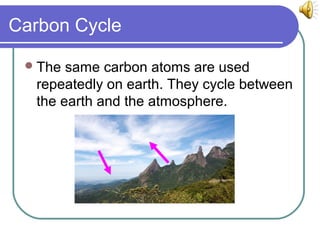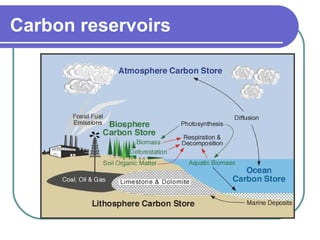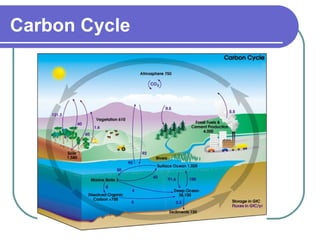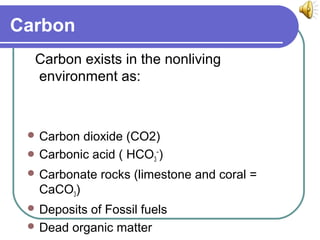Carbon cycles between the atmosphere, organisms, oceans, and lithosphere. Plants absorb carbon dioxide from the air through photosynthesis, and animals obtain carbon by eating plants or other animals. When organisms die, decomposers release carbon back into the atmosphere or it becomes trapped in fossil fuels and sediments. Human activities like burning fossil fuels have increased the amount of carbon dioxide in the atmosphere, contributing to global warming.




























